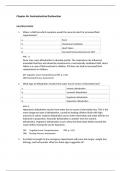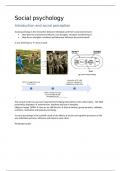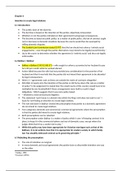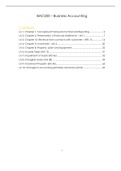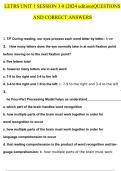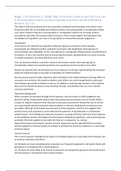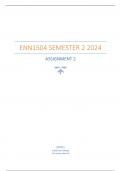Chapter 46: Gastrointestinal Dysfunction
MULTIPLE CHOICE
1. When a child has which symptom would the nurse be alert for increased fluid
requirements?
a. Fever
b. Mechanical ventilation
c. Heart failure
d. Increased intracranial pressure (ICP)
ANS: A
Fever may cause dehydration to develop quickly. The respiratory rate influences
insensible fluid loss and should be monitored in a mechanically ventilated child. Heart
failure is a case of fluid overload in children. ICP does not lead to increased fluid
requirements in children.
DIF: Cognitive Level: Comprehension REF: p. 1410
OBJ: Nursing Process: Assessment
2. What type of dehydration results from water loss in excess of electrolyte loss?
a. Isotonic dehydration
b. Isosmotic dehydration
c. Hypotonic dehydration
d. Hypertonic dehydration
ANS: D
Hypertonic dehydration results from water loss in excess of electrolyte loss. This is the
most dangerous type of dehydration, caused by feeding children fluids with high
amounts of solute. Isotonic dehydration occurs when electrolyte and water deficits are
balanced in proportion. Isosmotic dehydration is another term for isotonic
dehydration. Hypotonic dehydration occurs when the electrolyte deficit exceeds the
water deficit, leaving the serum hypotonic.
DIF: Cognitive Level: Comprehension REF: p. 1411
OBJ: Nursing Process: Assessment
3. An infant is brought to the emergency department with poor skin turgor, weight loss,
lethargy, and tachycardia. What are these signs suggestive of?
, a. Overhydration
b. Dehydration
c. Sodium excess
d. Potassium excess
ANS: B
These clinical manifestations indicate dehydration. Symptoms of overhydration are
edema and weight gain. Regardless of extracellular sodium levels, total body sodium is
usually depleted in dehydration. Symptoms of hypocalcemia are a result of
neuromuscular irritability and manifest as jitteriness, tetany, tremors, and muscle
twitching. These symptoms do not indicate hyperkalemia.
DIF: Cognitive Level: ComprehensionREF: p. 1412 | Table 46-4
OBJ: Nursing Process: Assessment
4. What is often the cause of acute diarrhea?
a. Irritable bowel syndrome
b. Antibiotic therapy
c. Hypothyroidism
d. Hirschsprung’s disease
ANS: B
Acute diarrhea is a sudden increase in frequency and change in consistency of stools
and may be associated with antibiotic therapy, upper respiratory or urinary infections,
or laxative use. Hirschsprung’s disease and hypothyroidism are usually manifested with
constipation rather than diarrhea. Irritable bowel disease is the cause of chronic
diarrhea rather than acute diarrhea.
DIF: Cognitive Level: ComprehensionREF: p. 1413 | p. 1416
OBJ: Nursing Process: Assessment
5. What is the viral pathogen that frequently causes acute diarrhea in young children?
a. Giardia organisms
b. Shigella organisms
c. Rotavirus
d. Salmonella organisms
ANS: C
, Rotavirus is the most common viral pathogen that causes diarrhea in young children.
Giardia and Salmonella are bacterial pathogens that also cause diarrhea. Shigella is a
bacterial pathogen that is uncommon in Canada.
DIF: Cognitive Level: Comprehension REF: p. 1417
OBJ: Nursing Process: Assessment
6. Which is a parasite that causes acute diarrhea?
a. Shigella organisms
b. Salmonella organisms
c. Giardia lamblia
d. Escherichia coli
ANS: C
In Canada, the incidence of intestinal parasitic disease, especially giardiasis, has
increased among young children and causes acute diarrhea. Shigella, Salmonella, and
E. coli are bacterial pathogens, not parasites.
DIF: Cognitive Level: Comprehension REF: p. 1417
OBJ: Nursing Process: Assessment
7. A stool specimen from a child with diarrhea shows the presence of neutrophils and red
blood cells. These results are most suggestive of what condition?
a. Protein intolerance
b. Parasitic infection
c. Fat malabsorption
d. Bacterial gastroenteritis
ANS: D
Neutrophils and red blood cells in stool indicate bacterial gastroenteritis. Protein
intolerance is suspected in the presence of eosinophils, as is parasitic infection. Fat
malabsorption is indicated by foul-smelling, greasy, bulky stools.
DIF: Cognitive Level: Comprehension REF: p. 1417
OBJ: Nursing Process: Assessment
8. What is the first treatment a nurse provides in the therapeutic management of a child
with acute diarrhea and dehydration?
MULTIPLE CHOICE
1. When a child has which symptom would the nurse be alert for increased fluid
requirements?
a. Fever
b. Mechanical ventilation
c. Heart failure
d. Increased intracranial pressure (ICP)
ANS: A
Fever may cause dehydration to develop quickly. The respiratory rate influences
insensible fluid loss and should be monitored in a mechanically ventilated child. Heart
failure is a case of fluid overload in children. ICP does not lead to increased fluid
requirements in children.
DIF: Cognitive Level: Comprehension REF: p. 1410
OBJ: Nursing Process: Assessment
2. What type of dehydration results from water loss in excess of electrolyte loss?
a. Isotonic dehydration
b. Isosmotic dehydration
c. Hypotonic dehydration
d. Hypertonic dehydration
ANS: D
Hypertonic dehydration results from water loss in excess of electrolyte loss. This is the
most dangerous type of dehydration, caused by feeding children fluids with high
amounts of solute. Isotonic dehydration occurs when electrolyte and water deficits are
balanced in proportion. Isosmotic dehydration is another term for isotonic
dehydration. Hypotonic dehydration occurs when the electrolyte deficit exceeds the
water deficit, leaving the serum hypotonic.
DIF: Cognitive Level: Comprehension REF: p. 1411
OBJ: Nursing Process: Assessment
3. An infant is brought to the emergency department with poor skin turgor, weight loss,
lethargy, and tachycardia. What are these signs suggestive of?
, a. Overhydration
b. Dehydration
c. Sodium excess
d. Potassium excess
ANS: B
These clinical manifestations indicate dehydration. Symptoms of overhydration are
edema and weight gain. Regardless of extracellular sodium levels, total body sodium is
usually depleted in dehydration. Symptoms of hypocalcemia are a result of
neuromuscular irritability and manifest as jitteriness, tetany, tremors, and muscle
twitching. These symptoms do not indicate hyperkalemia.
DIF: Cognitive Level: ComprehensionREF: p. 1412 | Table 46-4
OBJ: Nursing Process: Assessment
4. What is often the cause of acute diarrhea?
a. Irritable bowel syndrome
b. Antibiotic therapy
c. Hypothyroidism
d. Hirschsprung’s disease
ANS: B
Acute diarrhea is a sudden increase in frequency and change in consistency of stools
and may be associated with antibiotic therapy, upper respiratory or urinary infections,
or laxative use. Hirschsprung’s disease and hypothyroidism are usually manifested with
constipation rather than diarrhea. Irritable bowel disease is the cause of chronic
diarrhea rather than acute diarrhea.
DIF: Cognitive Level: ComprehensionREF: p. 1413 | p. 1416
OBJ: Nursing Process: Assessment
5. What is the viral pathogen that frequently causes acute diarrhea in young children?
a. Giardia organisms
b. Shigella organisms
c. Rotavirus
d. Salmonella organisms
ANS: C
, Rotavirus is the most common viral pathogen that causes diarrhea in young children.
Giardia and Salmonella are bacterial pathogens that also cause diarrhea. Shigella is a
bacterial pathogen that is uncommon in Canada.
DIF: Cognitive Level: Comprehension REF: p. 1417
OBJ: Nursing Process: Assessment
6. Which is a parasite that causes acute diarrhea?
a. Shigella organisms
b. Salmonella organisms
c. Giardia lamblia
d. Escherichia coli
ANS: C
In Canada, the incidence of intestinal parasitic disease, especially giardiasis, has
increased among young children and causes acute diarrhea. Shigella, Salmonella, and
E. coli are bacterial pathogens, not parasites.
DIF: Cognitive Level: Comprehension REF: p. 1417
OBJ: Nursing Process: Assessment
7. A stool specimen from a child with diarrhea shows the presence of neutrophils and red
blood cells. These results are most suggestive of what condition?
a. Protein intolerance
b. Parasitic infection
c. Fat malabsorption
d. Bacterial gastroenteritis
ANS: D
Neutrophils and red blood cells in stool indicate bacterial gastroenteritis. Protein
intolerance is suspected in the presence of eosinophils, as is parasitic infection. Fat
malabsorption is indicated by foul-smelling, greasy, bulky stools.
DIF: Cognitive Level: Comprehension REF: p. 1417
OBJ: Nursing Process: Assessment
8. What is the first treatment a nurse provides in the therapeutic management of a child
with acute diarrhea and dehydration?

